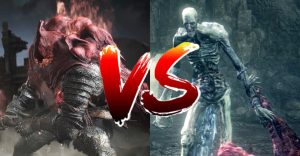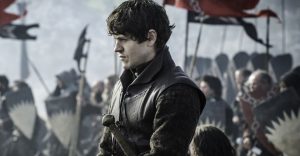Why Battlestar Galactica’s Ending Was So Controversial

The hit sci-fi series Battlestar Galactica ended in 2009 with a divisive 3-part finale. Titled “Daybreak,” the show ended with an epic conclusion that was met with a mixed reception. It is difficult to end a beloved series in a satisfying manner — hence why there are so many controversial TV finales. The Battlestar Galactica ending attempted to tie up the series’ many plot lines, but unfortunately left many questions unanswered. That, however, was not the finale’s biggest issue; rather, viewers were disappointed by Ronald D. Moore’s use of God as a literal deus ex machina.
Ronald D. Moore is the creative mind behind Battlestar Galactica; the Star Trek: The Next Generation alumnus developed the idea for the series, which is a reboot of the 1978 TV series of the same name. Like the original, the reboot is set in a distant part of the universe and depicts the remnants of human civilization, greatly reduced in number, living on planets known as the Twelve Colonies. The 2004 series was highly-acclaimed for blending politics, suspense, and philosophical debate into the science-fiction space adventure genre. Moore wrote the first two episodes of the series, so it is fitting that he wrote the final three.
Moore’s finale saw the Galactica attack a heavily-armed Cylon colony in order to rescue Hera Agathon, the only known human-cylon hybrid. After the thrilling battle, the humans emerge victorious; however, the ship sustained significant damage and is at risk of being dragged into a black hole. Starbuck hastily enters coordinates based on music notes Hera had written and, miraculously, the ship jumps to a habitable planet — which they name Earth. The new Earthlings abandon their technology in order to live a peaceful existence, and Starbuck — who is an Angel — vanishes because she fulfilled her destiny. The epilogue reveals that the new Earth is the viewer’s Earth 150 000 years ago, that Hera Agatha is the “Eve” to all present-day Earthlings, and that humans in the 21st century are at risk of repeating the same mistakes with robotics and modern technology.

“Daybreak” ultimately ended by the summary that the events were “all part of God’s plan.” This line is spoken by Inner Six (also sometimes called Head Six), a version of the Cylon Six who by the end of the series is confirmed to be an agent of a higher power — an angel-like being, of sorts. This revelation was a disappointing answer to the long-running mystery of who Inner Six really was. Added to this was the complicated history of Katee Sackhoff’s Kara “Starbuck” Thrace. Thrace seemingly died in the season 3 episode “Maelstrom,” only to reappear in the season’s finale “Crossroads, Part II” perfectly intact. She spent several episodes moodily defending her identity before “Daybreak” revealed her to be among the same caliber of being as Inner Six.
While religion had always been a part of Battlestar Galactica, the heavy-handed nature of the finale was off-putting to some viewers, and the lack of nuance in the episode’s final moments was a disappointing conclusion to what was widely considered a layered and sophisticated sci-fi series. Battlestar Galactica had set a high bar it was unable to live up to — but, thankfully, not being able to stick the landing in this case does not erase the show’s legacy of being a cult favorite series.
About The Author


















